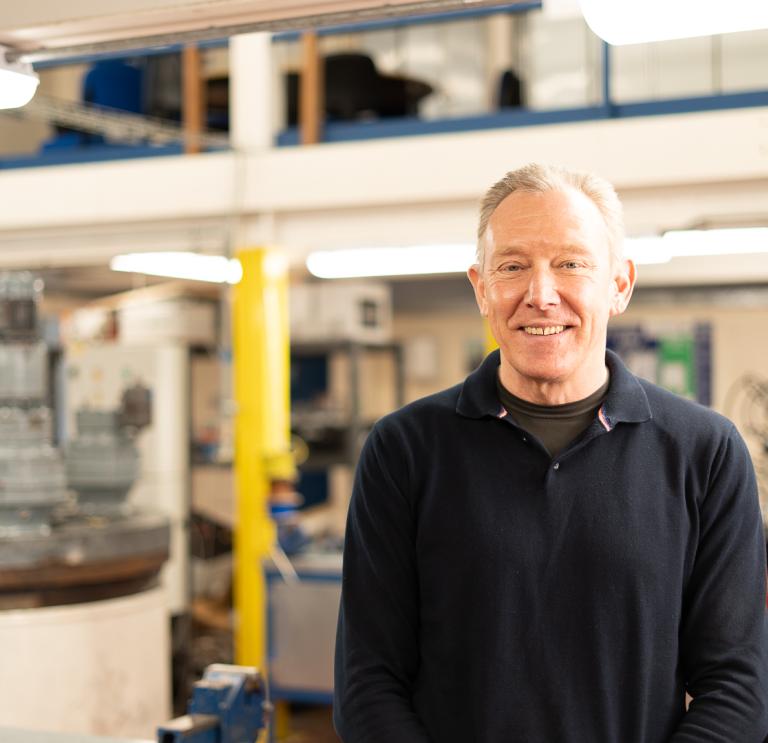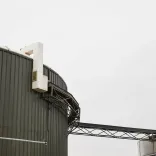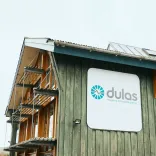Business backstory
Wales is blessed with abundant clean energy natural resources, which will prove crucial over the coming decades as we transition away from fossil fuels and fully embrace green energy. The key will be to harness these resources as effectively and efficiently as possible.
That’s where RWE’s renewables expertise will likely play a major role. Already the largest power producer in Wales, the company employs over 300 staff across Wales and has invested £3 billion into its operations over the last decade, notably in its extensive offshore wind farms – North Hoyle, Rhyl Flats and Gwynt Y Mor - located along the North Wales coast.
Together, RWE’s renewable energy portfolio generates one third of Wales’s renewable energy production – that’s enough to power 550,000 homes.
Why Wales?
“I guess you could call North Wales our spiritual home in terms of offshore wind,” says John McKenzie, RWE’s Head of Offshore Operations for UK North. The company started operations with North Hoyle in 2004 and then built Rhyl Flats next to it. Its newest site, the £2bn Gwynt Y Mor investment, is by far the biggest of the three. It generates 576 MW of electricity but is already being expanded – the Awel Y Mor extension is set to be the single largest renewable energy investment in Wales over the next decade and should provide enough power for 600,000 additional homes.
One of the key components to RWE’s offshore wind success has been the partnerships it has forged with the local community – none more so than the Grŵp Llandrillo Menai umbrella group of further education institutions consisting of Coleg Llandrillo, Coleg Menai and Coleg Meirion-Dwyfor.
“We hope to invest £15 billion in the UK on green energy technologies and clean energy infrastructure up to 2030. For that to be a success, we need highly skilled technicians with a high standard of training,” says McKenzie. To ensure those standards, RWE has partnered with Grŵp Llandrillo Menai to develop its award-winning wind turbine apprenticeship programme. Currently there are 30 RWE employees upskilling through the partnership.
“Now we have employees travelling to learn in North Wales from as far afield as Brighton and Grimsby. Basically, everyone in the UK comes to North Wales to get the necessary skills.”
How has the Welsh Government helped?
Partnership also extends to other industry sectors thanks to close connections in Wales, alongside close working with Welsh Government. Recently, RWE signed an agreement with Tata Steel in Port Talbot to see how the steel being made in South Wales could potentially be used in new floating offshore turbines in the Celtic Sea.
“This is an ongoing mutual partnership where we want to share knowledge and grow our businesses,” says McKenzie.
Having a strong working relationship with the government has also been essential – not surprising given the amount of investment RWE is putting into renewable energy. “With Gwynt Y Mor, we had extensive discussions with the Welsh Government about how best to invest in not just infrastructure but also the local community. Making the right commitments to local community funds, and making sure it works, is essential. We couldn’t get that right without good government partnerships.”
Looking forward, McKenzie is confident that RWE can not only make renewable energy a success here in Wales but can also play an important role in helping the Welsh Government meet its net zero commitments and fulfil the promise of the Well-being of Future Generations Act.
“We're in this for the long term,” says McKenzie. “Hopefully, together with the Welsh Government and the people of Wales, we can show how renewable energy really can make a difference.”
Learn more about RWE on the RWE website.




